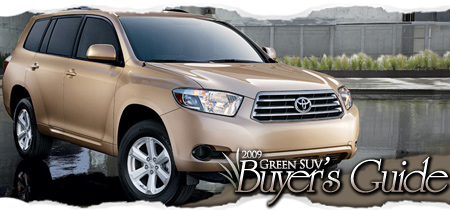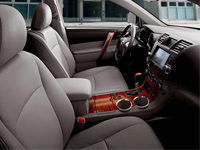|

2009 Toyota Highlander Hybrid Road Test
When you've lead the vehicle race in fuel efficient technology for a while, it's a pretty good guess you want to stay ahead of the pack. As American automotive tastes have morphed to greener driving, Toyota has made sure those folks didn't go wanting.
 |
2009 Toyota Highlander Hybrid Interior |
Not long ago the little Toyota Prius auto earned gawks and giggles from curious bystanders viewing its oddly squished shape. But that was before fuel prices started increasing by leaps and bounds. Soon other Toyota vehicles bore the hybrid insignia, including the Camry family sedan and an American favorite — a sport utility vehicle. The 2009 Toyota Highlander Highlander brought better fuel economy but kept much of its SUV capability.
Highlander's jump on the midsize SUV segment won enough converts to guarantee a second generation makeover which came out a year ago. Now, for 2009, the Toyota Highlander consolidates its position as a hybrid leader, winning even more fans every time there's a spike in prices at the pump.
Unlike some hybrid vehicles, Highlander uses Toyota's Hybrid Synergy Drive, a full hybrid technology, meaning gasoline engine or electric motor can work independently at times rather than always leaning on each other. Both base trim (for five) and upmarket Limited models (for seven with rear seat raised) only come in on-demand four-wheel-drive. A net of 270 combined horsepower comes from a 3.3-liter, 209-HP V-6 engine paired with upgraded electric motor power equivalent to 45 kWatts, enough to tow 3,500 pounds. Toyota gives mileage numbers of 27 city/25 hwy and 26 combined. Pricing starts in the low- to mid- $30 K range for those balancing fuel savings against the cost of hybrid club entry.
Highlander Hybrid's redo retains its sport utility look, rather than adopting more crossover characteristics. Inside is a wealth of features, including top notch audio and Toyota's patented Center Stow seat and console and sliding second row. STAR SAFETY SYSTEM manages the vehicle's safety and suspension functions. And among warranties, there is eight-year, 100,000-mile Hybrid-related Component Coverage. |